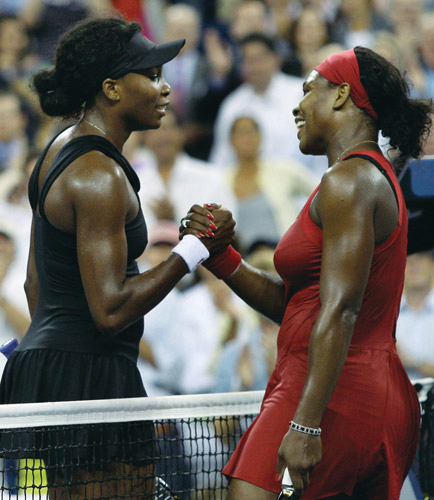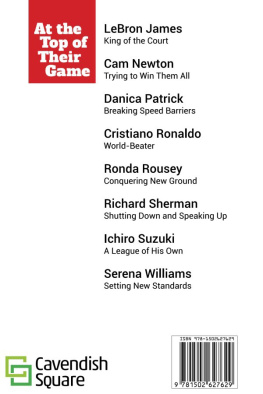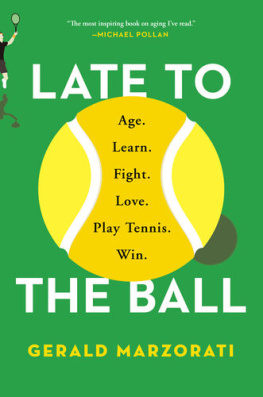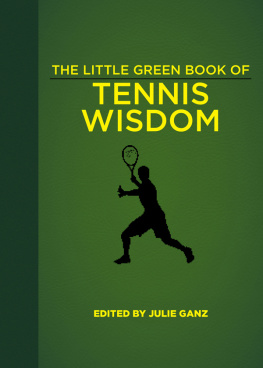All rights reserved. No part of this publication may be reproduced or utilized in any form or by any means, electronic or mechanical, including photocopying, recording, or by any information storage or retrieval systems, without permission in writing from the publisher. For more information, contact:
Williams vs. Williams
The year was 2008. The event was the U.S. Open, one of the most important tennis tournaments of the year. On this late-summer day, the crowd at Arthur Ashe Stadium in New York City was abuzz. They were about to watch what might have been the most entertaining match between tennis superstarsand sistersto date: the quarterfinal match between Venus Williams and Serena Williams.

Serena Williams, right, shakes hands with her sister Venus Williams, after Serena wins their quarterfinal match at the U.S. Open tennis tournament in New York on September 3, 2008.
Source: AP Images.
When the sisters walked onto the court with their tennis rackets in hand, all eyes were on them. Venus, 28 years old and standing 6-foot-1, dressed in all black, has long arms and legs, a lean body, and a look of fierce determination. At the time, Venus was ranked seventh in the world. Serena, Venus's younger sister by 15 months, dressed in all red, is slightly shorterstanding 5-foot-11and has a more muscular figure, but she shares the same determination in her eyes. She was ranked fourth in the world.
The stakes were high. If Serena won, she would have a chance to regain her No. 1 ranking as the top women's tennis player in the world. If Venus won, she would have a chance to win another Grand Slam title.
Over their long tennis careers, the two sisters had met 16 times, with each winning eight matches. Despite this even record, past matches between the sisters were often lackluster. Their feelings for each other would sometimes prevent them from playing their best tennis.
That was not the case on this evening, as the match featured spectacular points and dramatic shifts in momentum. Venus took leads in both sets, holding two set points in the first and a remarkable eight set points in the second. (A set point occurs when the player who is leading needs one more point to win the set.) Serena chased down shot after shot to hold off Venus and come back in both sets. She ended up winning in two tiebreakers, 7-6, 7-6. Only two months before the U.S. Open, the sisters had faced each other at another important tournamentWimbledon; in that face-off, Venus had won. But today was Serena's victory: She would move on, and Venus's U.S. Open was finished. Venus would later tell an interviewer, "I'm a very good closer. I've never had a match like that in my life. I guess there's always a first. [Serena] just played a little better."1 Serena had been surprised by Venus's errors, many of which came on those set points, so Serena considered herself lucky. Although happy for her own success, Serena could feel for her sister. She said, "I try not to look at [Venus] because I might start feeling bad. I want the best for her. I love her so much. She's my best friend."2
Notes
- 1. Lynn Zinser, "A Dazzling Display by Williams Sisters," New York Times, September 3, 2008. http://www.nytimes.com/2008/09/04/sports/tennis/04night.html?_r=1.
- 2. Ibid.
Growing Up on the Courts
Venus Ebony Starr Williams was born on June 17, 1980, in Lynwood, California. A little more than a year later, on September 26, 1981, Serena Jameka Williams was born in Saginaw, Michigan. The girls are the daughters of Richard and Oracene Williams. They have three older half sisters who are Oracene's daughters. Richard and Oracene married in 1980. After Serena was born in 1981, while she was still an infant, the family of seven moved from Saginaw, Michigan, back to sunny Southern California.
Richard, a Louisiana native and the head of a private security firm, and Oracene, a nurse from Mississippi, raised their five girlsLyndrea, Isha, Yetunde, Venus, and Serenato believe in themselves. It was important for the Williams children to believe that they could make something of their lives, as the family lived in a rough, poverty-stricken city called Compton, located near Los Angeles. Compton was a high-crime area, known for drug sales and gangs, and the family witnessed much violence. Compton, though, was not all bad. Much of the city was filled with hardworking people trying to provide and care for their families on small incomes. Times were hard, and money was tight. Richard believed that living in such conditions would prepare his children for the harsh realities of the world and make them better able to handle all kinds of situations.
Richard Williams
Richard knew what it was like to live in poverty. In Shreveport, Louisiana, where he grew up with his mother (his father was rarely around) and his sistersPatty, Barbara, Penny, and Fayhis family had little. His mother worked as a cotton picker in the summer months and as a custodian at a school during the rest of the year. When Richard was just 12 years old, he paid $75 for a small plot of land on which he built a simple house for his family. At the end of that year, he paid the balance of what he owed for the landanother $75. The house, like many in the area, had no running water or electricity.
Growing up in the segregated South during the 1940s and 1950s, Richard was accustomed to racism. White people often called him racist names. He was not allowed to ride in the front of buses. He was not allowed to eat in certain restaurants. He was not allowed to sit with white people in theaters. Despite the unfair treatment, Richard's mother taught him to rise above his surroundings and believe in himself. She taught him not to think of himself as a Negro (the term then used for African Americans) but to think of himself as a mana man who could do and achieve whatever he set his mind to do. When he was 17, she encouraged him to get out of Louisiana. She was worried that he would be killed if he stayed. With a dollar in his pocket, Richard got on a freight train and left home.
He moved around a lot and took odd jobs where he could. He eventually met Oracene, and they fell in love and married. Richard tells people that, even before Venus or Serena were born, he had plans for them to become tennis stars. In the late 1970s, he was watching a women's tennis tournament on television and was amazed at the prize money the winner receivedmore than he made in an entire year. Richard decided then that he and Oracene should make their children into tennis stars.
Richard believed in taking charge of one's own life. He believed in going after what you wanted and making it happen. So, when he decided he wanted to know how to play tennis, he taught himself. He read books, watched videos, and studied matches on television. He got a ball machine and practiced his backhand and his forehand until he felt confident in his ability. He found an instructoroddly enough, also named Richard Williamswho taught him how to move quickly and lightly on his feet and how to improve his strokes to give them more power and precision. Richard fell in love with the game. He wanted to share his love of tennis with those who mattered the most to him: his family.












